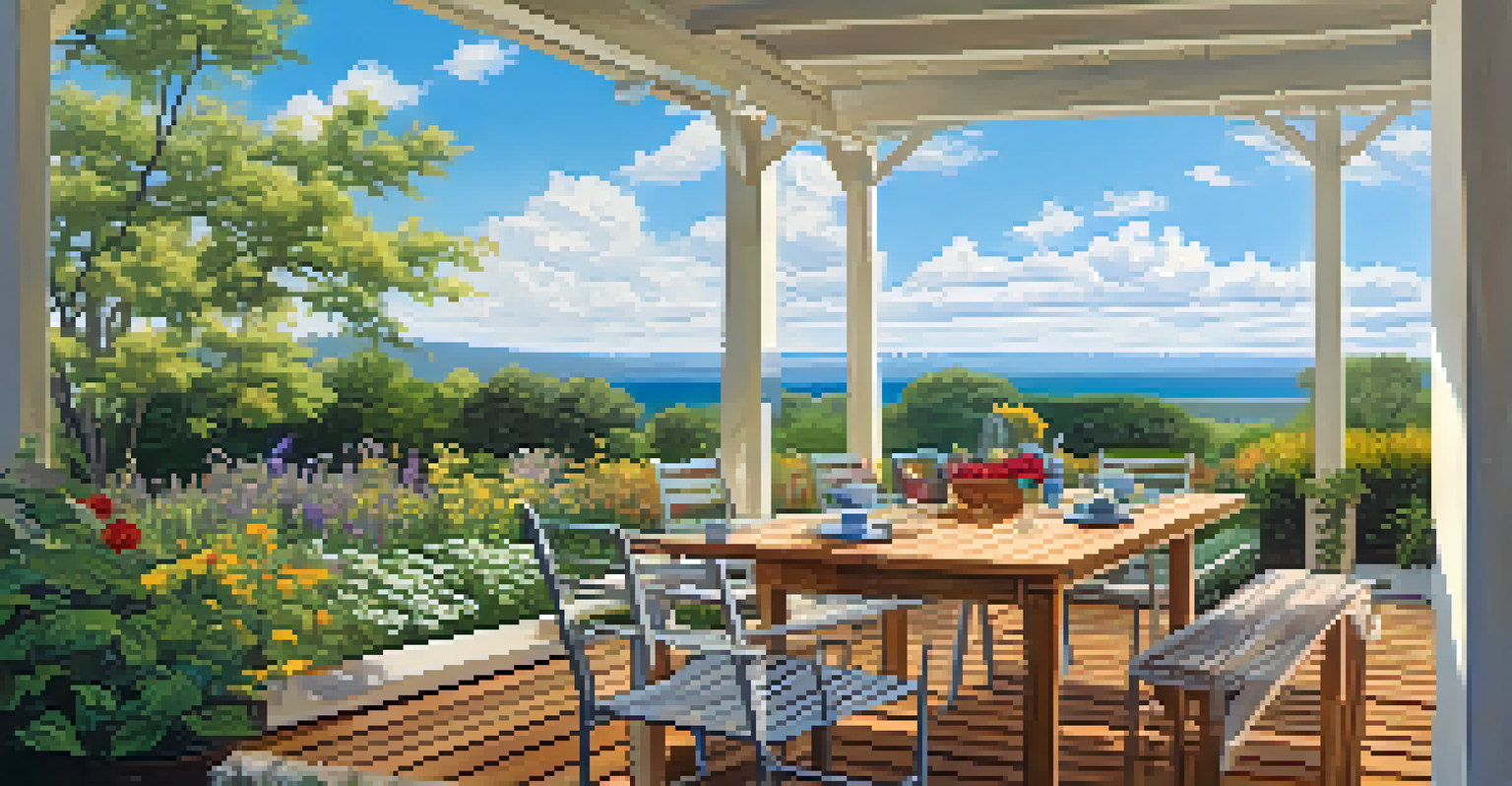How to Avoid Poorly Designed Outdoor Spaces

Understanding the Importance of Outdoor Design
Outdoor spaces are an extension of our homes, offering areas for relaxation and socialization. When designed thoughtfully, they can enhance our quality of life and boost property value. However, poorly designed spaces can lead to wasted potential and frustration.
The greatest gift of the garden is the restoration of the five senses.
Imagine a backyard that feels cramped or a patio that gets no sunlight; these scenarios can make outdoor experiences less enjoyable. Good design considers usability, aesthetics, and the environment, ensuring that every inch serves a purpose. Understanding these basics helps you avoid costly mistakes.
In essence, a well-designed outdoor space is like a well-curated art piece—everything has its place and adds to the overall harmony. By prioritizing thoughtful design from the start, you can create spaces that are not only functional but also beautiful.
Assessing Your Outdoor Space Before Design
Before diving into design, take a step back and assess your space. Consider the size, shape, and location of your outdoor area, as well as existing features like trees or pathways. This assessment will help you determine what can be improved and what should stay.

Think about how you plan to use the space. Will it be for entertaining, gardening, or simply lounging? Your intended activities should guide your design choices, ensuring that the layout supports your lifestyle. Ignoring this step can lead to designs that feel disconnected from your needs.
Design Enhances Outdoor Quality
Thoughtful outdoor design can significantly improve relaxation, socialization, and even property value.
Also, consider the climate and natural light available in your area. These factors influence not just aesthetics but also plant choices and material durability. By understanding your outdoor environment, you’ll make decisions that enhance usability and longevity.
Choosing the Right Materials for Durability
Material selection is crucial in outdoor design, as it affects both the look and longevity of your space. Opt for materials that can withstand the elements, such as weather-resistant woods, stones, or composites. This choice will save you time and money in the long run.
Good design is all about making other designers feel like idiots because that idea wasn’t theirs.
For example, a wooden deck may look stunning but requires regular maintenance; instead, consider composite decking that offers the same aesthetic without the upkeep. Additionally, think about colors and textures that blend well with your environment to create a cohesive look.
Remember, the right materials not only enhance visual appeal but also contribute to the functionality of your space. Investing in durable materials ensures that your outdoor area remains inviting and usable for years to come.
Creating a Functional Layout for Your Outdoor Space
A functional layout is the backbone of great outdoor design. Start by mapping out zones for different activities, such as dining, relaxing, and gardening. This zoning approach helps in creating a flow that guides movement through the space, making it feel open and inviting.
For instance, placing seating areas close to cooking spaces encourages social interaction while dining. Additionally, consider pathways that connect these zones, ensuring easy access and a natural progression from one area to another. A well-thought-out layout can significantly improve usability.
Materials Impact Longevity
Choosing durable materials is essential for maintaining the beauty and functionality of your outdoor space over time.
Moreover, don’t forget to account for privacy and noise. Using hedges or screens can create intimate areas that feel separate from neighbors, enhancing comfort. Balancing openness with privacy will create a welcoming environment for you and your guests.
Incorporating Plants for Beauty and Functionality
Plants are essential in outdoor spaces, providing beauty, shade, and even food. Choose a mix of perennials and annuals to ensure year-round color and interest. Additionally, consider native plants that require less maintenance and are better adapted to your local climate.
Think about layering plants at different heights to create visual depth. Taller plants can serve as natural screens for privacy, while ground covers can fill empty spaces and reduce weeds. This layering not only enhances aesthetics but also promotes biodiversity in your garden.
Lastly, remember that plants can also influence the microclimate of your outdoor space. Strategically placed trees can shade areas, keeping them cooler during hot months. This thoughtful planting ensures that your outdoor environment remains comfortable and enjoyable.
Lighting Design to Enhance Outdoor Spaces
Good lighting can transform your outdoor space from ordinary to extraordinary. Consider a mix of ambient, task, and accent lighting to create a warm and inviting atmosphere. Pathway lights can guide your way, while string lights add a festive touch for evening gatherings.
Another effective option is using spotlights to highlight architectural features or beautiful plants. This creates focal points that draw the eye and enhance the overall design. Additionally, well-placed lighting can extend your outdoor enjoyment into the night.
Regular Maintenance is Crucial
Consistent upkeep is key to preserving the aesthetics and usability of your outdoor area, adapting as your needs change.
When designing your lighting plan, think about energy efficiency. Solar-powered lights or LED fixtures can reduce electricity costs while being environmentally friendly. A well-lit outdoor space not only enhances safety but also sets the mood for memorable gatherings.
Regular Maintenance to Preserve Outdoor Design
Once you’ve created your dream outdoor space, regular maintenance is key to preserving its beauty and functionality. This includes tasks like pruning plants, cleaning outdoor furniture, and checking lighting fixtures. A little upkeep goes a long way in ensuring your space remains inviting.
Consider setting up a seasonal maintenance schedule so that tasks don’t pile up. For instance, spring might be for planting, while fall can involve cleaning up debris and preparing for winter. Being proactive helps you avoid larger issues down the line.

Lastly, don’t be afraid to make adjustments over time. Outdoor spaces evolve, and what worked initially may need tweaking as your lifestyle changes or as plants grow. Embracing this adaptability ensures your space continues to meet your needs.